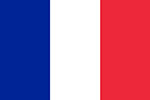The village of Kertugal

Name origin: Ker: the house / Tud: the people / Gal: Gaule or foreigner (in old Breton)
Before the buildings that replaced the heathland, this site offered a panoramic view of the surrounding area. From here, it was possible to observe the entire Bay of Saint-Brieuc, from Bréhat to the Pointe du Roselier.
The first traces of life found at Kertugal date back to the Bronze Age.
At the village’s highest point, the rocky chaos of the Tertre aux Druides remains an enigma. Some believe it once housed a tumulus and a cromlech, or circle of menhirs.
The Gallo-Romans also settled here.



Numerous coves with natural jetties, such as the Grève des Fontaines and the Grève de Fonteny, enabled a population to settle and organize itself into a village community as early as the 5th century. These harbors sheltered the small boats of sailors who traded by sea, for lack of roads to the interior of the country.
At the same time, evangelizing monks left Cornwall on frail skiffs known as curraghs. Carried by currents and prevailing winds, they landed in the Bay of Saint-Brieuc.
Legend has it that the founding saint of Saint-Quay washed ashore in this way. Find out more by visiting the nearby “Fontaine Saint-Quay” sign.

The village of Kertugal is considered to be the birthplace of Saint-Quay-Portrieux, as Saint-Quay did not then exist and Portrieux had not yet developed.
From the 16th century onwards, the sheltered port of Kertugal lost its hegemony, while Portrieux became more accessible to the large ships setting out to fish cod in Newfoundland.
Local life did not change much until the early 20th century.
Most families spoke Gallo.
Most houses have thatched roofs and dirt floors. Paths and alleyways are lined with stone embankments, and the main street is unpaved.
There are few shops, but the tobacconist’s serves as a grocery, delicatessen and haberdashery, often run by sailors’ widows, who survive in this way. Families help each other out in a spirit of solidarity.
A secular school brings pupils together in a single class up to school-leaving certificate level.
Daily exchanges are confined to the hamlets that make up the village.
A locality bears witness to a less glorious history.
“Le tertre aux pendus” (the mound of the hanged) is a mound on which sea scum, smugglers and shipwreckers were hanged for a long time, using light signals to attract ships at night and steal their cargoes after wrecking on the rocky coast.
The site is close to the old railroad bridge, at the top of Rue Jeanne d’Arc.







